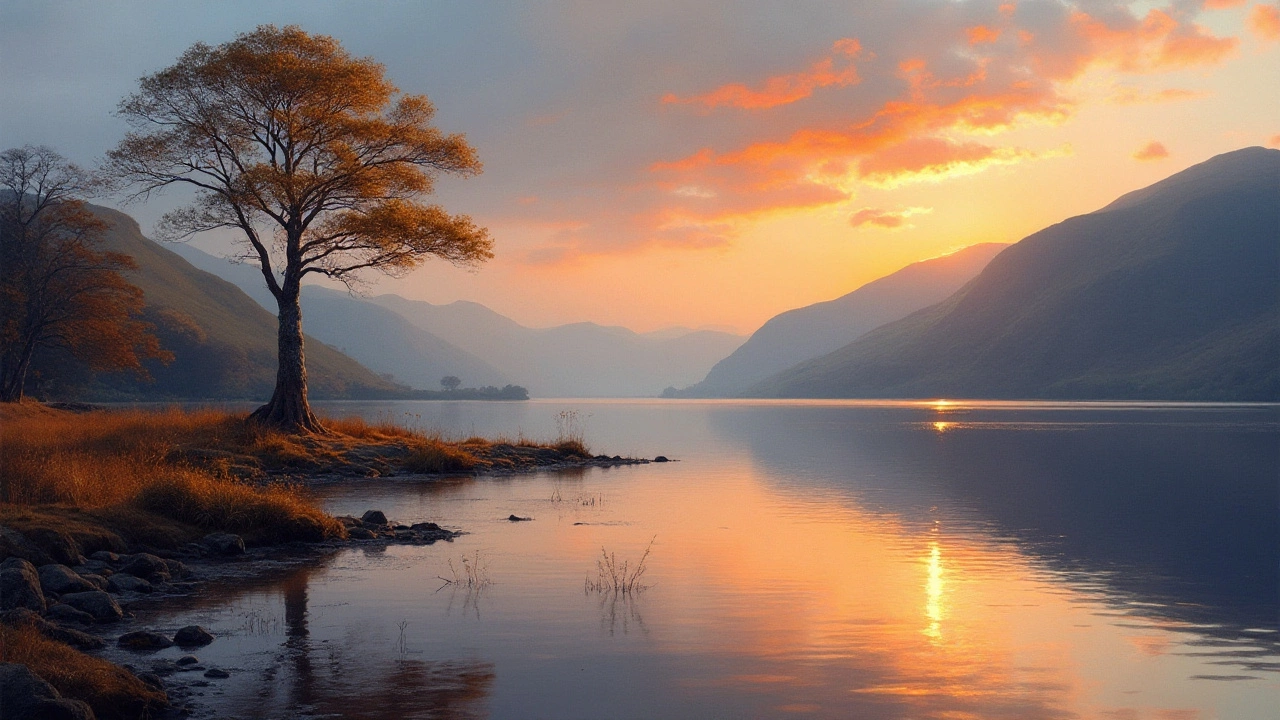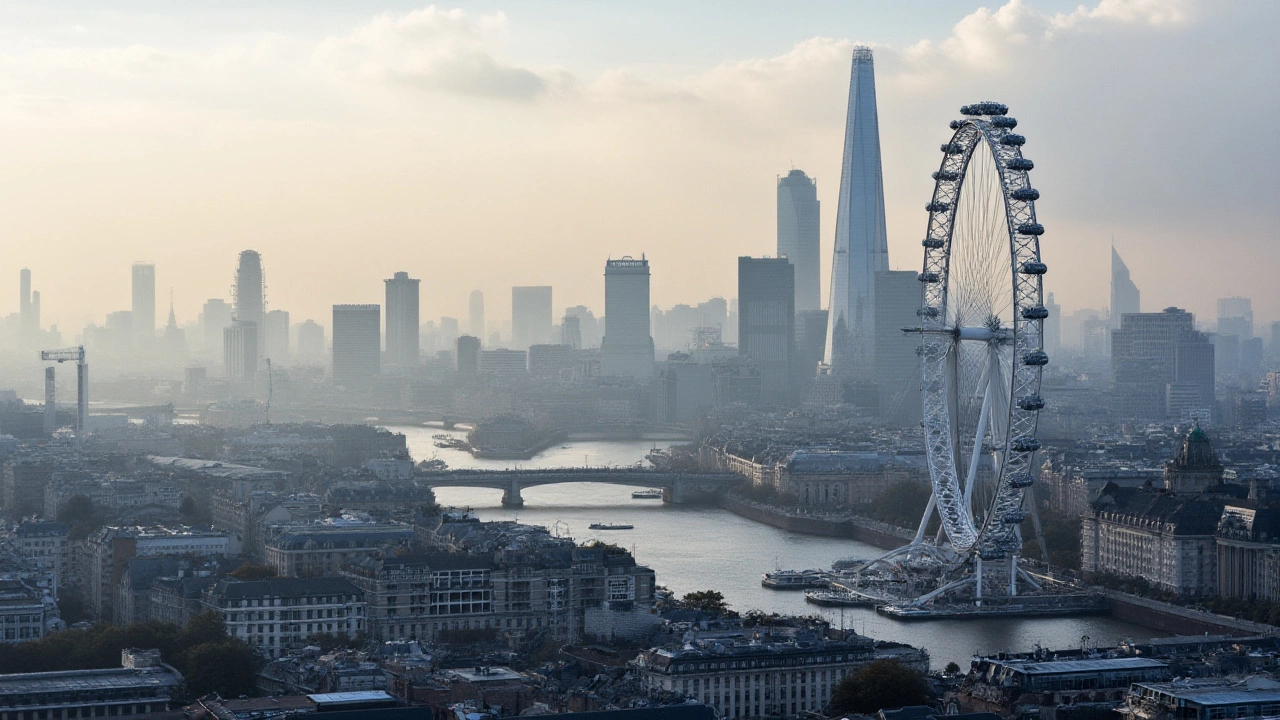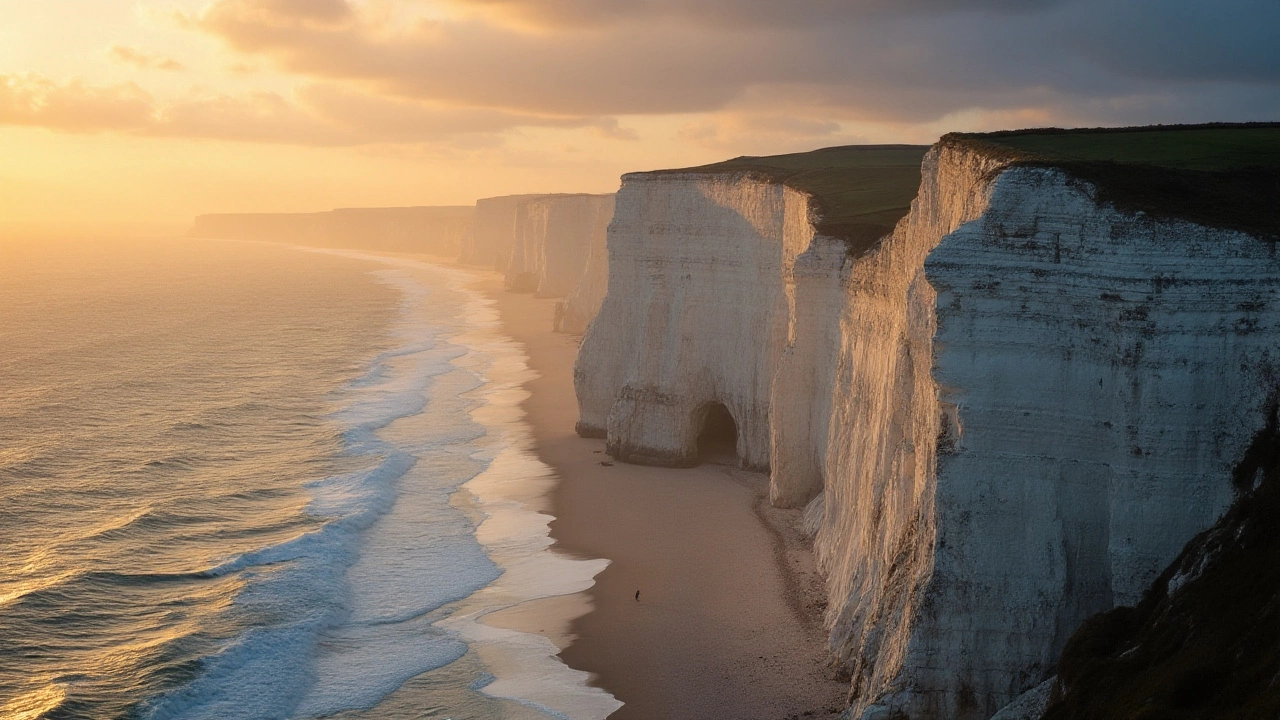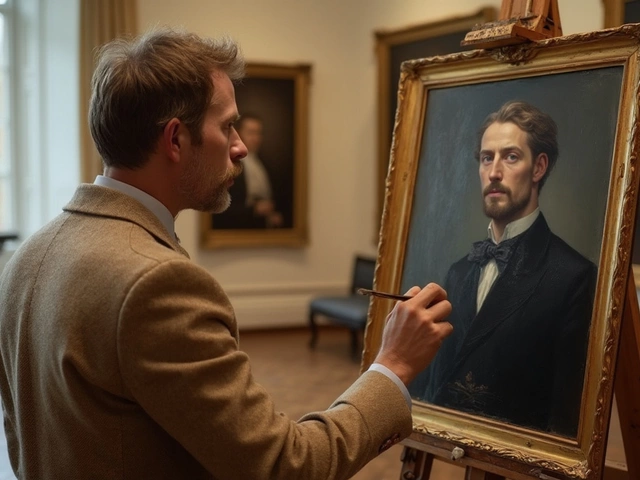When we think of landscape photography or painting, a horizontal image often comes to mind. This is largely due to the format's ability to encompass sweeping vistas and large expanses of scenery. It mirrors the way our eyes naturally scan the horizon, making it a popular choice among artists and photographers alike.
However, the world of landscapes is not confined to the horizontal plane. Experimenting with vertical compositions can open up a world of creativity and storytelling. Such orientations can highlight different aspects of a scene, drawing the viewer's attention to elements that might otherwise be overlooked.
In this exploration, we will delve into the reasons behind the traditional preference for horizontal landscapes and discover the exciting possibilities that lie within vertical formats. Whether you're a budding photographer or an experienced painter, understanding these concepts can enrich your creative practice.
- The Tradition of Horizontal Landscapes
- Breaking the Norm: Vertical Landscapes
- Artistic Techniques for Vertical Compositions
- Famous Vertical Landscapes in Art History
- Tips for Choosing Photo Orientation
The Tradition of Horizontal Landscapes
The notion of capturing the great outdoors has long been associated with the horizontal orientation. This can be traced back to some of the earliest landscape paintings, where artists like Claude Lorrain and J.M.W. Turner dominated the scene. These artists depended heavily on the horizontal format to portray the broad vistas and grand spectacles of nature. By using this wide frame, they were able to create paintings that not only captured the essence of the scenery but also conveyed a sense of depth and perspective that seemed almost immersive. The horizontal landscape became synonymous with exploration, inviting viewers on a visual journey across familiar and exotic localities.
The Influence of the Camera
The advent of photography brought a similar focus on the horizontal plane. This is partly due to the shape of the earliest cameras and the natural way humans perceive their surroundings. Our eyes register scenes in a left to right scan, which means that horizontal photos often feel more comfortable and expansive. Early photographers such as Ansel Adams capitalized on this, creating breathtaking images of national parks that emphasized the breadth of their landscapes. The format helped capture not just the foreground and horizon, but also lent a sense of scale to these images, making viewers feel as if they could step into the picture themselves.
“A good photograph is knowing where to stand.” - Ansel Adams
Aesthetic and Practical Benefits
From an aesthetic perspective, the horizontal layout is often seen as more balanced and calming, offering a natural flow that mirrors the earth’s horizon. It allows artists and photographers to integrate multiple elements of a composition smoothly, guiding the eye naturally from one part of the scene to another. This seamless integration of foreground, midground, and background creates a narrative in each piece. Landscape paintings and photos taken in this way often resonate with a sense of tranquility and order. Moreover, the practical benefits of horizontal images cannot be overlooked. As a standard frame for films, monitors, and digital screens, the horizontal format fits into the natural dimensions of most modern viewing technologies, making it a popular choice among content creators as well.
| Artist | Notable Work | Year |
|---|---|---|
| Claude Lorrain | Landscape with Ascanius Shooting the Stag of Sylvia | 1682 |
| J.M.W. Turner | The Fighting Temeraire | 1839 |
| Ansel Adams | The Tetons and the Snake River | 1942 |
Despite its preeminence, the horizontal orientation isn't without its challenges. Maintaining a viewer’s interest across such a vast area can be complicated, requiring thoughtful composition and a keen eye for detail. Artists must consider how to create dynamic compositions that maintain the viewer's engagement throughout the width of the canvas or frame. Understanding how different elements interact within a horizontal space is crucial to mastering this traditional approach, which continues to captivate audiences even in an era replete with new media and technologies.
Breaking the Norm: Vertical Landscapes
For centuries, landscape photos have predominantly been portrayed in a horizontal format, echoing our natural horizon line and panoramic view. Traditionally, this orientation was chosen to capture the broad, linear expanse of scenes, fitting seamlessly with the way humans perceive the world around us. Yet, breaking this norm opens a realm of creative potential by opting for vertical orientations in both landscape paintings and photographs. Vertical compositions bring an entirely new dimension to art by focusing primarily on the height and depth of a scene rather than its width. This shift in perspective can dramatically alter the mood and message of a piece, offering a fresh interpretation of a traditional view.
Vertical landscapes can also emphasize different elements within a scene. Consider a towering waterfall cascading down the side of a cliff or an urban scene, where skyscrapers soar to the heavens. These images naturally lend themselves to a vertical orientation by doing justice to the height and grandeur of the depicted objects. A vertical format can effectively evoke a sense of awe or convey an imposing scale, presenting the viewer with an immersive experience. By drawing the eye upward or downward, vertical compositions create a sense of movement and direction that horizontal landscapes cannot achieve.
One notable example can be seen in the works of pioneering photographers such as Ansel Adams, who occasionally broke tradition by capturing vertical shots to highlight the towering majesty of mountains and trees. The emotional impact of such images can be substantial as viewers are invited to engage with the height and space in a dynamic way. Artists who dare to deviate from convention may find themselves pushing the boundaries of traditional landscape artistry, inviting fresh interpretations.
"A vertical landscape allows us to challenge the parameters of traditional views, unlocking perspectives that breathe new life into the art of photography and painting." - Art Critic Julia Freeman
Utilizing a vertical format encourages artists to approach landscapes from a different mindset, presenting an opportunity to explore unconventional perspectives. While horizontal landscapes capture the span of a view, vertical compositions may focus on elements like tall trees, towering buildings, or striking geological formations. This can lead to unexpected uses of light and shadow, adding drama and texture to the final piece. Engaging with these elements not only provides a new lens through which to view familiar scenes but also fosters deeper emotional connections with the subject matter.
Moreover, vertical landscapes allow for creative experimentation with the positioning of focal points and the balance of composition. While navigation from left to right is common in horizontal works, vertical images demand a vertical journey through the frame. This can result in a powerful aesthetic that captivates the observer, encouraging them to contemplate the scene in a unique sequence. To successfully create captivating vertical landscapes, consider elements such as lines, layers, and textures, which can be skillfully utilized to guide the viewer’s eye throughout the piece.

Artistic Techniques for Vertical Compositions
The world of landscape photos and paintings opens up intriguing possibilities when artists explore vertical compositions. Traditionally, landscapes have been horizontal due to their natural alignment with the horizon line. Yet, choosing a vertical format can offer a fresh perspective, often challenging but rewarding. One of the essential techniques involves focusing on elements within a scene that can be accentuated by the vertical space, such as towering trees, cascading waterfalls, or a narrow, winding path leading to the sky. By shifting perspectives, artists can draw viewers into the vertical flow, directing their gaze from the foreground to the background in an unexpected and compelling manner.
A key technique involves the use of leading lines. In the vertical format, these lines guide the viewer's eye upwards or downwards, depending on the focal point. For instance, a towering skyscraper captured from street level or a cascading waterfall descending into a pool can become focal features. These elements create a dynamic movement within the composition, ensuring that the eye flows naturally along the intended path. Balancing these elements skillfully can turn a vertical landscape into a dynamic visual journey.
Another effective approach is to enhance depth through layering. In a vertical layout, the space can be divided into distinct layers; the foreground, middle ground, and background can each tell their own segment of the story while contributing to the overall narrative. This technique not only adds depth but also complexity to the artwork. Shadows and light play crucial roles here, as they can enhance or diminish certain features, giving the composition a sense of drama or calm, depending on the viewer's interpretation.
Utilizing artistic techniques specific to vertical compositions requires understanding the impact of focal lengths and lighting. A longer focal length can compress the scene, bringing distant elements seemingly closer, and thereby intensifying the verticality of the subject. Landscape paintings and photos benefit from careful consideration of light direction and intensity, which influences both mood and focus. Sunrise or sunset, when light casts long shadows, can create striking effects in vertical compositions that may get lost in horizontal formats.
Color is another tool that can be effectively manipulated to convey mood and depth within a vertical space. By employing a palette that progresses from dark to light as the eye moves through the composition, or vice-versa, artists can manipulate feelings and create contrast. This technique adds emotional layers to the work, often surprising viewers with its unanticipated power. The vertical composition can transform landscapes into something symbolic, representing not just physical space, but also ideas of growth, ascent, or descent.
Renowned landscape photographer Ansel Adams once said, "There are always two people in every picture: the photographer and the viewer."
"A photograph is usually looked at - seldom looked into," Adams reminds us of the importance of engagement and connection that art forms evoke. Vertical compositions invite this deeper interaction, asking viewers not just to observe, but to journey through the captured moment and experience its profound effects.
To successfully execute a vertical composition, artists and photographers are encouraged to step out of their comfort zones and experiment.
- Explore various environments and lighting conditions,
- Analyze how vertical framing can transform ordinary scenes into extraordinary spectacles,
- And finally, practice regularly to develop a keen instinct for when a subject is best suited to this unconventional format.
Famous Vertical Landscapes in Art History
Throughout history, the unmistakable allure of the vertical landscape composition has captivated artists, leading to some of the most revered works of art ever produced. Why might an artist choose such a format that goes against convention? The answer lies in the unique artistic opportunities it presents. Vertical landscapes can invite viewers to explore a scene differently, drawing their eyes upwards across mountains or elevated perspectives that would otherwise remain unappreciated. Take, for example, the eighteenth-century Japanese artist Hokusai, whose iconic series "Thirty-Six Views of Mount Fuji" includes the famous print, "The Great Wave off Kanagawa." While primarily celebrated for its horizontal iterations, some of Hokusai's less-known vertical works provide striking depictions of nature's grandeur and verticality.
"To see the world in a grain of sand and a heaven in a wild flower, hold infinity in the palm of your hand and eternity in an hour." – William BlakeHis words perfectly encapsulate the essential aim of vertical landscapes, which is to capture elements so immense they appear to transcend our usual perceptions. These works challenge our traditional sense of space and perspective, encouraging a more profound contemplation of the scene depicted. Another notable painter, Caspar David Friedrich, employed vertical orientation in many of his landscapes to evoke emotion and monumental tranquility. His painting "The Wanderer Above the Sea of Fog" has an almost otherworldly appearance, using height and mist to emphasize the overwhelming power and beauty of nature. Artists like these capitalized on the storytelling ability of vertical landscapes, offering viewers an entrance into new worlds of visualization and experience.
Landscape Photography's Vertical Ascent
The art of vertical landscapes extends beyond painting into the arena of landscape photography, where luminaries like Ansel Adams have shown what can be achieved with the right framing. Adams, often associated with breathtakingly vast images, saw the potential in vertical framing, using it to great effect in several works that focus on towering trees and rugged cliffs. Such compositions began to form a niche within the broader field of landscape photography. Landscape photos like these leverage the natural asymmetry of tall elements, guiding the viewer’s eye upward, and creating a powerful narrative about shape, form, and texture.- Vertical landscapes open up alternative narratives about nature.
- Such compositions offer a sense of intimacy by focusing on towering, natural features.
- They challenge traditional rules, provoking deeper thought and connection.

Tips for Choosing Photo Orientation
When selecting the orientation for a landscape photo or painting, one must consider the story you are attempting to tell through your landscape photos. Each orientation—horizontal or vertical—offers unique opportunities for expression. Horizontal is a classic choice in landscape paintings, often used to capture expansive horizons and the grandeur of nature. This orientation plays on our natural tendency to visualize a linear perspective, drawing the eye across the canvas or frame to soak in the breadth of the view. Think of panoramic views of rolling hills, sweeping skies, or endless oceans. Such images become almost cinematic in their scope and drama, filling the frame with a wide array of elements that establish context and a sense of place.
On the other hand, vertical orientation allows for an entirely distinct approach. It's perfect for emphasizing height, elevating compositional elements that might otherwise be overlooked, or bringing attention to details that call for intimacy and focus. For instance, a towering redwood tree captured vertically can fill the frame with its majestic height, evoking a sense of awe that plummets upward rather than outward. This perspective invites viewers to delve deeper into the components that construct the scene, from a room's architecture to the strata of a mountain, thus creating a profound engagement with both the subject and its proportionate surroundings.
Evaluating the Scene
One should also factor in the subject matter and the environment being captured. Assess the natural lines within the scene. Do they run horizontally or vertically? Ideally, the orientation should complement these lines to lead the viewer’s eye naturally through the composition. In cityscapes, vertical shots can frame tall buildings beautifully, whereas horizontal ones might capture the sprawling city below in all its glory. Landscape painters also use this to their advantage, choosing orientations that best illustrate the story they want to convey through color, form, and composition. It's a deliberate choice that requires careful thought and planning, examining each aspect as though peeling back layers to the core of what makes an image resonate profoundly with an audience.
Psychological Impact
"Sometimes, the most exciting view of a landscape comes from turning your camera ninety degrees." - Ansel Adams
There's also a psychological element to consider in this choice. Horizontal landscapes often invoke feelings of stability and relaxation, thanks to their rootedness in our cultural perception of a grounded horizon. Conversely, vertical landscapes can generate an element of surprise or tension, offering a viewpoint that challenges our regular perceptions and invites curiosity. Experimenting with these perceptions can lead to unique storytelling ventures within your art. As photographers and painters, playing with orientation allows for rich narratives that echo across canvas and print, creating images that stay with the viewer long after the first glance.
Practical Considerations
Finally, think practically about the usage and presentation of your art. Horizontal images often lend themselves well to gallery exhibitions or as postcards; they're practical, functional, and fit many spaces meant for visual consumption. In contrast, vertical shots might be more challenging in traditional space but offer symmetrical aesthetic appeals in magazines or books. Of course, with the rise of digital media, these restrictions are becoming less pertinent. Regardless of format, respect your vision and intent for the work, acknowledging the symbiotic relationship between orientation and message. Choose what best translates the vibrance of your subject through the lens, whether you're documenting nature's splendor or the quiet hum of urbanity.







